It is hard to imagine at this point in our collective human history, the season of fall – and in particular Halloween – not being associated with graveyards.
These serene and sacred final resting places of the dearly departed are interwoven with the rich cultural tapestry that is October 31st – be it in the form of Halloween, Samhain, or events such as Día de Muertos that transpire at the beginning of November.
Connections between the end of the harvest season and death are inextricably linked. The kinship these two share stretches back countless thousands of years.
There is something wholly natural in the thinking and belief that the visual death of the landscape and end of many readily available food sources gathered or grown from the land and the realm of human death would go hand-in-hand.
Not every culture around the world links the end of October with death, but a good many have certainly long associated autumn with concepts of dying, death, and the afterlife.
Often, even when solemn, these events were seen as times of merriment, mirth, feasting, presenting offerings, and communing with those on the other side of the veil.
In the 21st century, the connection between the season of Halloween and the realm of the dead, especially as it exists in the earthy plots of land we call cemeteries and graveyards, has become primarily symbolic for a lot of folks.
For others, however, a continuation of the connections that generations before us held fast to is still going strong in our lives and spiritual practices.
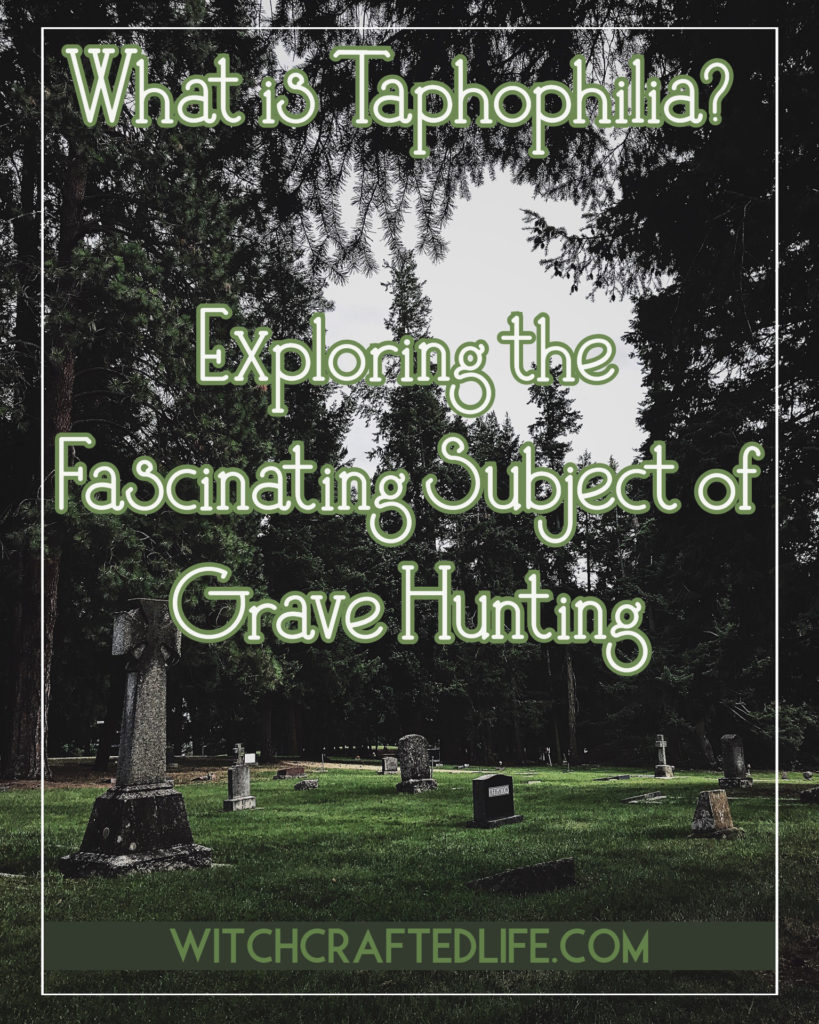
The subject of death and graveyards is not relegated to October though, of course. Yet the natural connection between the two makes the early days of fall and the coming autumnal months ahead an especially well-suited time to delve into a topic that is near and dear to my heart: taphophilia.
What is taphophilia?
An English term born of two ancient Greek words, “taphos”, which applies to matters such as funerals, wakes, tombs, burials, and graves, plus “philia”, which means love/fondness, taphophilia quite literally means a love of graveyards, death and related subject matter.
Before we proceed even a single line further, it should be stated for the record, that the hobby/passion of taphophilia does not in any way mean the same thing as necrophilia.
The latter meaning that a person has an extreme/pathological fascination or obsession with dead bodies, which may or may not elevate to the level of engaging in sexual acts with corpses.
While it is certainly possible that someone could be both a taphophile and a necrophile, one does not imply the other in any way. In fact, I would argue that the crossover between the two groups is bound to be very small.
A taphophile is someone who has an interest in things such as funerals, cemeteries, gravestones, and the general subject of memento mori (as well as the funerary and remembrance items associated with such), and taphophilia is not something negative or perverse.
Taphophiles may enjoy such activities as visiting graveyards and cemeteries, photographing such locations, reading epitaphs, taking grave rubbings, thinking about/discussing subjects of death and the lives of those who have passed on, and studying the history of graveyards and/or famous deaths.
As well as researching subjects such as art, burial rites and customs, photography (including post mortem photography), poetry, music and other creative mediums in which death has been featured in varying capacities.
Anyone, of any age, can be a taphophile. I myself have been a proud (funeral) card-carrying member of team taphophilia since childhood.
Likewise, taphophiles can be of any nationality, spirituality or religion, profession, or gender.
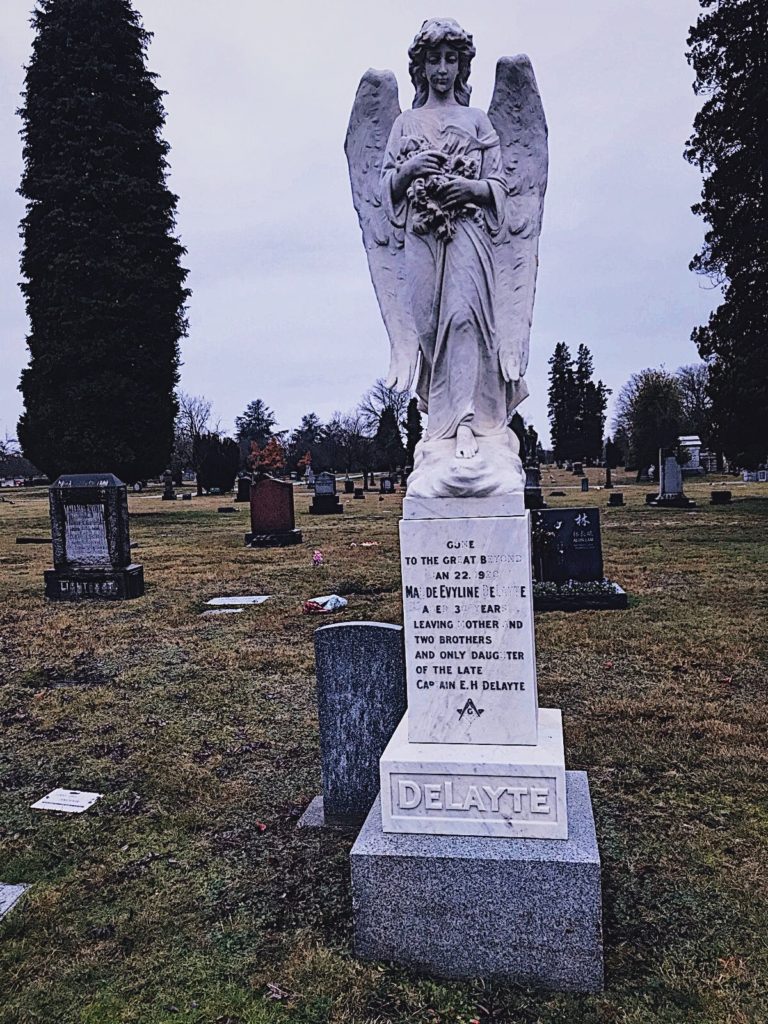
If you have a strong interest in topics pertaining to graveyards, funerals, and/or death, you may be a taphophile already!
For some, a fascination or connection with these topics starts very early in life. For others, it may develop in their teens or their adult years. Indeed, a person can find themselves bitten by the proverbial taphophilia bug at any stage in their life.
It is not uncommon for taphophilia to emerge organically from other areas of interest such as genealogy or archelogy in which a person may routinely find themselves studying graveyards, gravestone symbolism, death records, funerary customs and/or art, or other related topics.
Likewise, someone who may start out with a focus on taphophilia might find that their interest in subjects like history or genealogy have been ignited or kindled all the more and so begin to weave these passions together.
Many, though certainly not all, taphophiles enjoy documenting/recording their trips to graveyards, often sharing some of what they’ve seen and discovered publicly.
Searches on social media – Instagram very much included – for hashtags such as #taphophila #taphophile #gravehunter #graveexplorer #cemetarywandering #cemetaryphotography #cemetarylove and many other related terms quickly reveals that no shortage of people have an interest in the history and exploration of graveyards and associated topics.
The reasons why some folks are, or become, taphophiles varies immensely. I cannot help but think that the unique, highly personal reason(s) why we’re drawn to subjects pertaining to death, funerals and graveyards is one of the most beautiful and endearing aspects of being a taphophile.
Other names for taphophiles
Various other names have been used over the years to describe those with a penchant for subjects pertaining directly to cemeteries, graves, and the general subject of death.
Some of the most common are cemetery enthusiasts, cemetery devotee, cemetery tourists, tomb tourists, tombstone tourists, gravers, and grave hunters.
Naturally, as with most things in life, one does not need to identify with any particular term or label unless they wish to do so.
Long before the contemporary term taphophile came into being, many folks throughout time have had a strong interest in the subjects that taphophilia covers. To this day, some people simply choose to say that they like/love graveyards and leave it at that.
Of course, if you’re especially keen on graveyards and associated subjects, it can be handy to know that multiple terms exist, should you wish to refer to yourself and this interest by them.
They are also handy ways to search for information on subjects pertaining to taphophilia, connect with fellow taphophiles/grave hunters, and share the graveyard wandering photos you may capture along the way.
Is taphophilia morbid?
Well, that depends on a few things – including who you ask and how you define the word “morbid”.
First and foremost, there is nothing inherently negative (and certainly nothing “evil”) about taphophilia. Far from it!
Some taphophiles have done, and continue to do, much to help preserve graveyards, crypts, and funerary related history. Others may simply have a passionate interest in these subjects.
Death as a topic does have a certain inherent element of the morbid to it, that much is true, but the degree to which one perceives taphophilia as a “morbid interest” may lie largely with a person’s own current relationship to, and thoughts, on death.
For those who are, or who have grown to become, greatly at home with subjects of death, funerals and graveyards, taphophilia may hold little in their eyes that is overtly morbid, eerie, or frightening.
As someone who is extremely comfortable with virtually all aspects of death, dying, graveyards, and concepts pertaining to the afterlife, I find great beauty and interest in matters pertaining to taphophilia.
At the same time, however, I readily acknowledge and respect that not everyone gets giddy at the thought of visiting a graveyard or talking about death.
If this area is not your wheelhouse, that is 100% okay.
As with so much in life, we each have certain interests and passions, areas that we’re more comfortable with and those that feel off-putting, frightening, or otherwise unpleasant to us. Or, by the same token simply hold little to no interest for us.
Why are taphophiles interested in graveyards?
This is not an easy question to answer, as the reason(s) why each person with an interest in funerals, graveyards, and related death applicable topics varies widely.
For some, it may be primarily spiritually or culturally lead. Others may be avid history or celebrity buffs and so studying and/or spending time in cemeteries may be a natural extension of that interest.
Early childhood exposure to graveyards, standout experiences with funerals or graveyards at any point in one’s life, or a general connection to the subject of death itself are other possible reasons why someone may find themselves drawn to taphophilia.
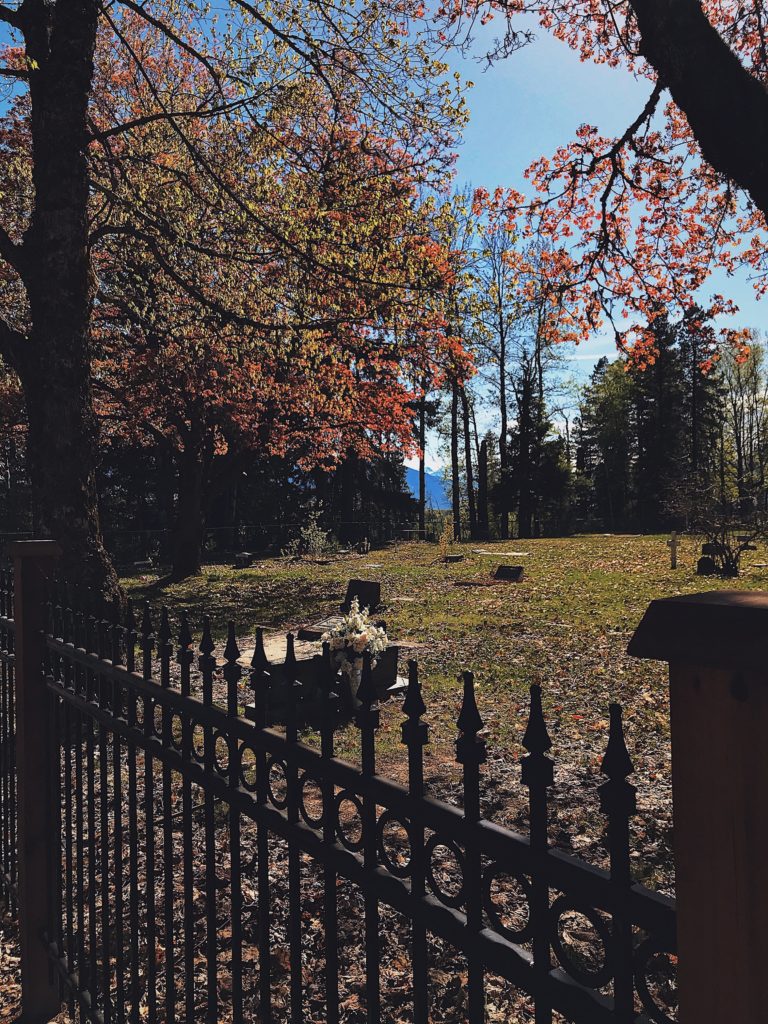
Some people, myself included, find graveyards can be places of deep personal introspection, serenity, comfort, and/or inspiration.
We visit and study them with great reverence and compassion, both for the departed and for the loved ones that the dead have left behind on this side of the veil.
Graveyards and similar settings – especially those with at least a few decades of existence under their belts – can be extraordinarily beautiful, fascinating and meaningful locations.
No shortage of taphophiles are drawn to cemeteries because of the breathtaking artistry and humble human history alike that they house.
There are, of course, many academic and culturally rooted reasons, as well, why someone may be drawn to visiting, studying or otherwise focusing on topics pertaining to funerals, graveyards, headstones and the like.
Gravestones and grave markers are highly important and meaningful, both to the families of those whose relatives have been laid to rest, as well as for society at large.
The volume of both art and history housed in graveyards the world over is immeasurable. It behooves and benefits us all to try, whenever possible, to preserve gravestones, cemeteries, and other burial grounds and the rich history that they house.
To this end, various excellent organizations, such as the Association for Gravestone Studies have formed over the years and the importance of the work these bodies do is deeply important and thoroughly commendable.
How to be a taphophile
The ways to be a taphophile/grave hunter are legion!
Arguably, an interest in graveyards, funerals, death, and/or the history of such is a primary component to being a taphophile.
Beyond that, one can opt to be as engaged, hands-on, and documentarian as you wish.
You can read every grave hunting-related blog under the sun, subscribe to YouTube channels and podcasts on the subject, and lap up every book you can get your hands on pertaining to graveyards, but doing so is not a prerequisite or requirement to being, or calling yourself, a taphophile.
While some taphophiles are drawn to particular graveyards, such as those where famous figures are buried or where their own relatives were laid to rest, many (if not most) of us break for just about any graveyard.
Plenty, (again) myself included, will actively seek them out, both close to home and when we travel.
So long as one is always respectful and lawful, there is almost no “wrong” way to visit a cemetery.
Just make sure you do so during official hours of operation, abide by any posted rules in a given cemetery, are respectful of other visitors (who may be there in a state of mourning), and do not take any manmade “souvenirs” home with you (items such as leaves, small amounts of graveyard dirt from inconspicuous areas, and similar organic materials are sometimes okay to take).
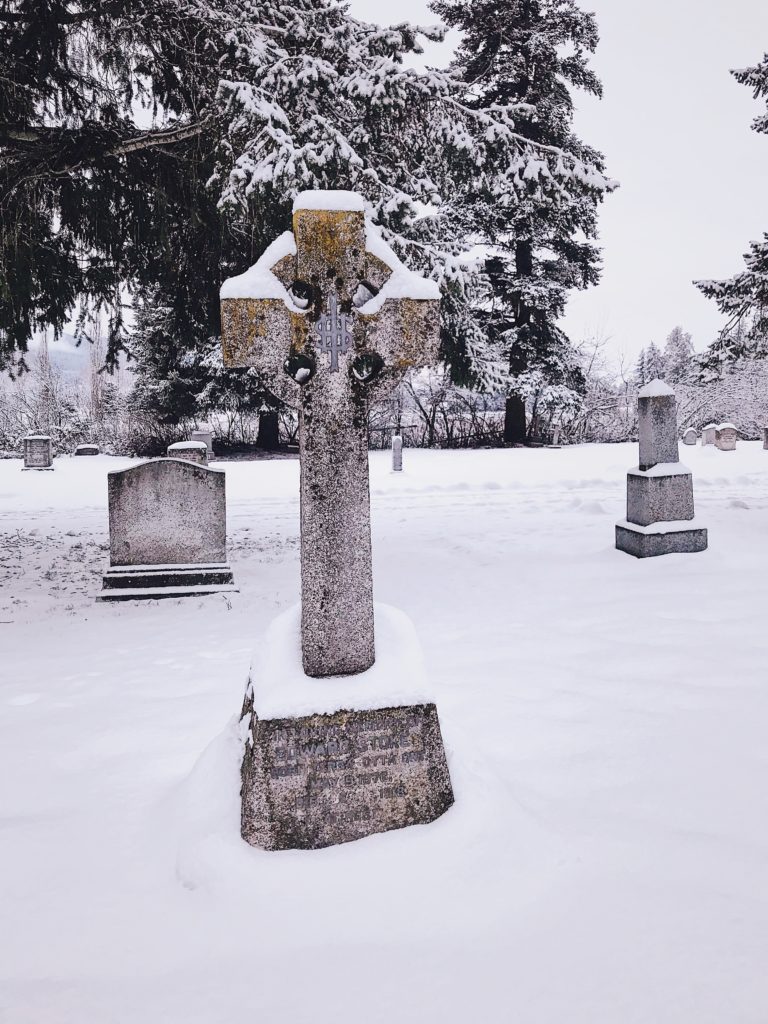
While visiting a graveyard, you may wish to capture photos or videos. This is generally permitted unless signage indicates otherwise.
Likewise, some people enjoy making gravestone rubbing. In recent years, there has been some debate surrounding this practice for various reasons. A key one of which is the fact that rubbings can potentially cause damage to older and/or delicate headstones.
Traditionally, paper (or thin fabric) and carbon pencil, charcoal, or another dark drawing medium have often been used to create gravestone rubbings. Rubbing wax, as detailed in this post on How to Make a Gravestone Rubbing, is another method that some people employ.
A fairly modern approach is to utilize shaving cream (which, as discussed in this PDF article on The Use of Shaving Cream on Headstones, can also be used to help clean graves off). Though, there too, mixed views on the subject abound.
It could be debated that creating headstone rubbings made more sense prior to the advent of digital photography and camera phones.
However, even a printed photo is not quite as tangible as an actual headstone rubbing that you created yourself, and it is easy to see why this popular form of graveyard recording is still in fairly wide use.
Personally, I prefer to stick with photographs of graveyards and headstones. Rest assured though, that I can easily see the appeal of gravestone rubbings and appreciate the important value they hold both to taphophiles and historians/genealogists alike.
Many ways abound to be a taphophile/grave hunter or simply have a passion for the subjects covered in this post.
You can research the graves of relatives, famous folks or total strangers alike, both online (websites such as findagrave.com can be a big help there) and off; collect funeral memorabilia (sometimes called funeralia/funerallia) including memento mori items, read up on the topics pertaining to funerals, graves, and death; join organizations dedicated to preserving graveyards and headstones, engage online with others who share this interest, make visiting graves a part of your spiritual practice (for example, those of a witchy/Pagan persuasion may wish to Use Graveyard Snow in Your Magickal Workings), study and/or create art pertaining to graveyards/death, and much, much more!
Some taphophiles are particularly drawn to certain elements of graveyards. For example, the epitaphs on headstones, graves that are older than a certain date, the stunning artistry that has often gone into headstones, grave markers, mausoleums, graveyard statues (be they angel statues or otherwise), or the wrought iron work found in some graveyards; or the grounds of a graveyard themselves, including trees and gardens.
Others have broader interests and enjoy graveyards as a whole, perhaps favouring certain styles of gravestones or types of cemeteries.
Some people find immense inspiration in graveyards and may visit them as a place in which to write or create art (or to gather the inspiration to create at a later point in time).
Graveyard photography has long been popular and is a fantastic way to document your graveyard visits. This act is flourishing more than ever thanks to digital photography and the awesome cameras that many modern cell phones now house.
It should be noted that, while certainly not necessary or even expected (per se), some people – irrespective of their spiritual beliefs – like to leave offerings or tokens of appreciation at the graveyards they visit.
A wide range of items can be utilized in this capacity, including fresh flowers, leaves, acorns, coins, small metal charms or trinkets, notes written on paper, and even bottles of alcohol.
Generally speaking, if leaving an offering/token of thanks, you want it to be something tasteful and which does not stand to damage the grave or the ground (and associated wildlife) around it.
Most graveyards are open to the general public and the majority are free (or by donation) to visit. If you feel the siren’s call to spend time at a graveyard, I highly encourage you to do so.
Generally peaking, graveyards are relatively safe, private, beautiful spots that may surprise you with their diversity and captivatingly soulfulness.
Being a taphophile is a wonderful and rewarding thing. It can be something you engage with occasionally, a main focal point of your life (and/or career in some instances) or anything in between.
If you opt to let others know about this interest, you may even find fellow taphophiles in your existing social circle or make new friends via channels such as social media or local historical preservation societies, where others who share this passion are able to connect.
As well, some cemeteries and graveyards have public (or, conversely, privately arranged) tours that you can take part in.
If you enjoy getting your taphophile groove on in the company of others who are apt to appreciate a good graveyard as well, such tours – which are often guided – can be a stellar way to learn more about a particular location and some of its interred residents.
Graveyards and cemeteries (the latter of which, it should be noted, tends to refer to a burial ground that is not attached or adjacent to a church or other place of religious significance, though the two terms are used fairly interchanging in everyday parlance) are immensely diverse places.
Some are massive, sprawling across multiple acres or city blocks, others are scarcely larger than a small backyard. Some are hundreds of years old, and plenty are far new. Each is an outdoor museum and history lesson in one.
Much like snowflakes and fingerprints, no two cemeteries are exactly alike.
Some may be more interesting or breathtaking than others, but each has a great deal to show and teach us. Even those that we have never been to before, tend to have a sense of the familiar and the unknown alike to them.
Graveyards are sacred, liminal spaces. They ask for respect, and ideally preservation, but demand little and offer up so much in return.
Intersecting interests
Taphophilia can be a standalone hobby or passion unto itself, and for plenty of taphophiles, it is just that.
However, a good many of us may have overlapping or related interests. Scores of other hobbies, passions and pastimes can dovetail or otherwise go hand-in-hand with taphophilia.
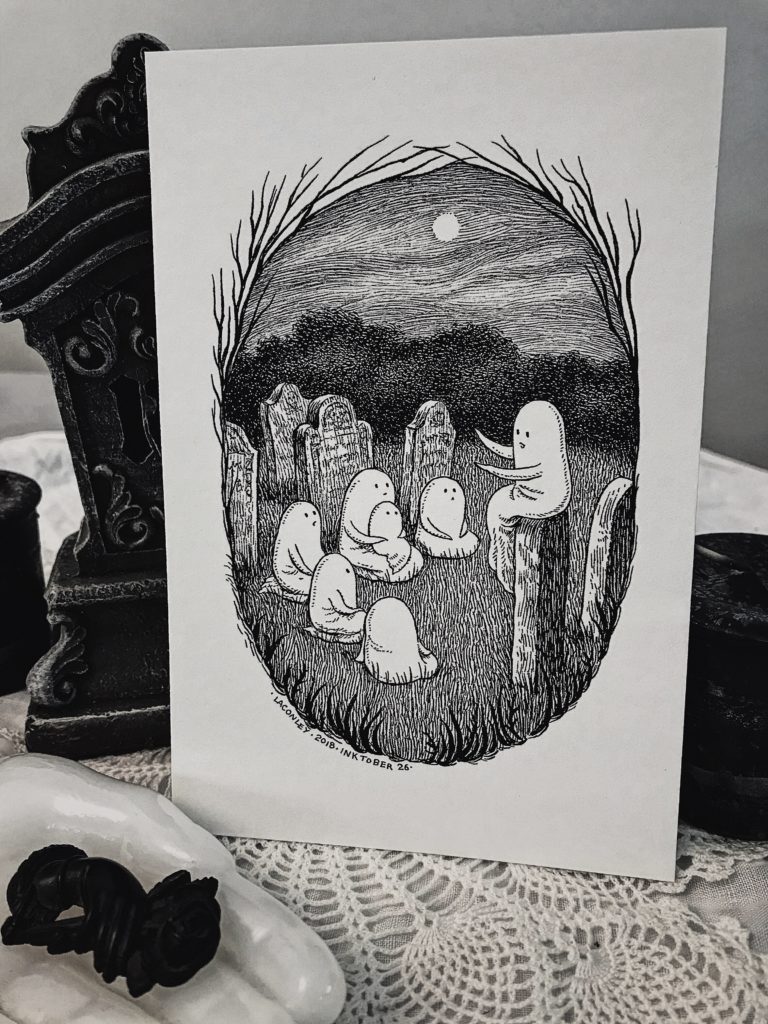
Some of the more common include studying/appreciating/collecting mourning jewelry and/or other forms of funeral and death related memorabilia and art; ghost hunting or other forms of paranormal investigation, abandoned building exploration, urbex (urban exploration), dark tourism, genealogy, history, poetry, writing, art, photography, bird watching, natural walking, and travel.
As well, it should be noted that many taphophiles are death positive – whether they are aware of this concept or not.
The term death positivity was coined by funeral industry professional, author, YouTuber, and all-around seriously awesome person, Caitlin Doughty to convey the concept that it is not only okay, but welcome and incredibly important, for people to speak openly and honestly about topics pertaining to death, dying, funerals, burial arts, corpses, and their own end-of-life plans.
If you wish to learn more about death positivity, I highly encourage you to read this excellent page on the Death Positive Moment.
Online resources for taphophiles
The number one resource for taphophiles must surely be graveyards and cemeteries themselves. In the 21st century, this is followed closely by the internet and the ever-larger volume of information pertaining to topics and locations that are of interest to those with a penchant for visiting cemeteries.
The following is an alphabetically arranged list of some of the taphophile, graveyard, and funerary history-related websites that I’ve personally found to be helpful over the years.
This is not, by any means, an exhaustive list of online resources for taphophiles. Instead, it is a great jumping-off point or way to further your existing taphophilia resource sphere.
Note: Some of these websites have not been updated in recent years. The information they house is still useful though to many who are interested in graveyards and cemeteries, so I’ve opted to include some “retired” pages here.
–100 Best Examples of Epitaphs
–Cemetery Conservators for United Standards
–Grave Explorations (YouTube channel)
–Introduction to Churchyard and Cemetery Monuments
–The Art of Dying: Memento Mori Through The Ages
–The Jolly Taphophile (and their corresponding YouTube channel, Graveyard Junkie)
–The Secret Life of Death podcast
–Tombstone Symbols and Their Meanings
–Travels of a Hobgoblin Taphophile
And here is a handful of great YouTube videos that those with an interest in graveyards, tombstone symbolism and related topics are apt to enjoy.
–Bizarre Graves and the Stories Behind Them
–Epitaphs & Grave Quotes From History
–Funny and Creative Tombstones That Actually Exist
–Headstone Designs, Symbols, Cherubs, and Iconography Found in Cemeteries
–Skulls, Willows, Cherubs & Other Gravestone Emojis
–The Fascinating History of Cemeteries
In addition to the online taphophilia resources listed above, a fab way to get the ball rolling when it comes to graveyard exploration and research is to simply Google keyword phrases such as “cemetery in [name of location]” and take things from there.
While not every cemetery has a website or Facebook page, in my experience, many of them – especially those that are actively maintained at present – are at least listed on Google Maps.
As well, plenty of city council, local tourism, and historical society websites will make mention of graveyards, cemeteries, and memorial parks in their vicinity. Each of these resources can potentially be useful for those wishing to explore burial grounds either close to home or further afield.
And lastly, there are quite a number of books – both in and out of print – pertaining to graveyards, funeral customs and rites, and similar topics.
I’m thinking that this an area that deserves a blog post unto itself, so will start compiling just such a list to hopefully share here with all you in the future.
What being a taphophile means to me personally
As you may have deduced, my passion and the reverence I hold for cemeteries, funerals, and the vast subject of death is tremendous.
If you follow me on social media, particularly Instagram and Pinterest (in particular, check out these boards on my account: Death Becomes Us All, In Loving Memory, and Remembered in Art), you may already be aware that this is a subject that is very near and dear to my heart.
I collect antique and vintage funeral related items, read extensively on death-related subjects, follow oodles of others who share this passion, am incredibly death positive, and visit cemeteries on a regular basis.
Graveyards soothe me. They are serenity and comfort, inspiration, spiritual hubs, and places of extraordinary beauty.
I feel at home in cemeteries. Their headstones and markers, angels and crypts ask no questions, yet they spark many queries and remind me both of the brevity and extraordinary gift of life.
It’s safe to say that I am a proud taphophile and wouldn’t want it any other way.
My sweet husband, bless him, has long learned that a trip to a cemetery is a surefire way to lift my spirits, help calm my nerves if needed, and bring me happiness in the process.
We currently live within walking distance of our small town’s cemetery, which was founded in the 1910s. As I do not drive, the fact that – in the non-snowy months at least – I can reach this sacred spot on foot is all the more meaningful to me.
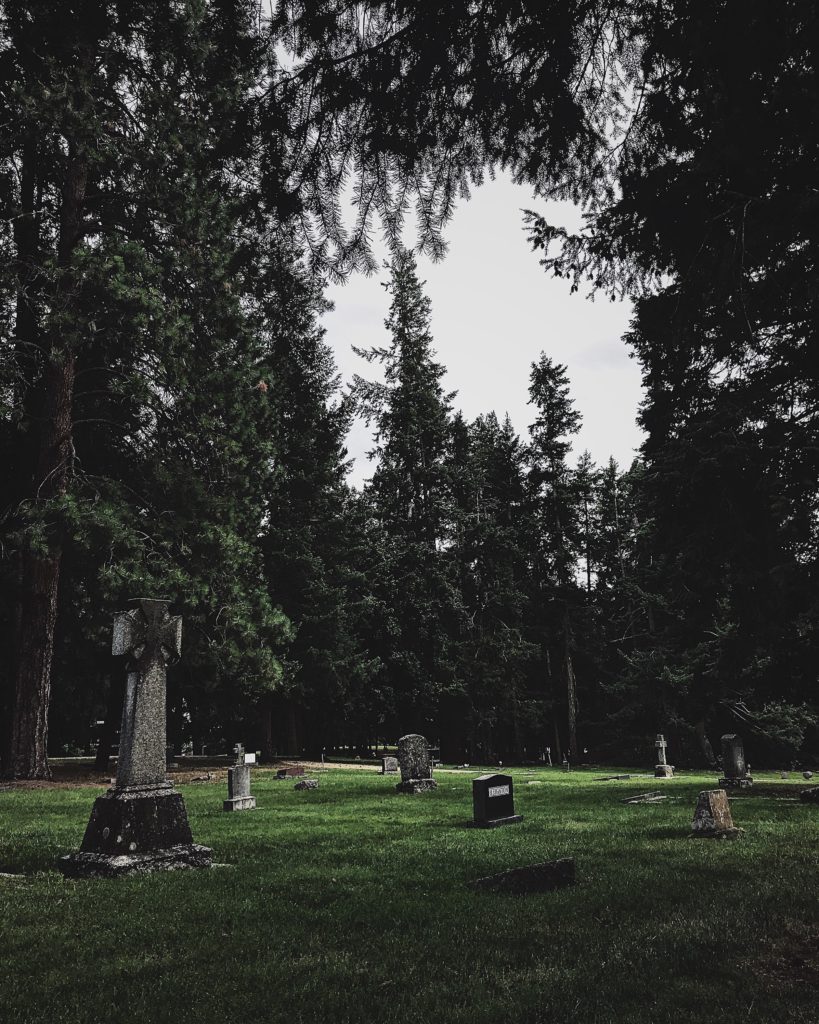
I visit often. The lanky evergreens that pepper and surround this quiet, humble small-town cemetery stand watch over those who slumber in the manicured ground below. The energy of the place is cathartic, pure, honest, sweet and wonderful.
With each trip, I become more familiar with those who reside in this graveyard, yet every visit introduces me to something new as well.
And when we travel or simply visit nearby towns, cities, and tiny unincorporated communities alike, I seek of cemeteries. Even before we’ve met, they feel like old friends.
Familiar, timeless, and earnest, graveyards beckon to me and I gladly heed their call. Each one teaching me, guiding me, and helping me to celebrate both sides of the veil in equal measure.
Are you a fellow graveyard lover as well? 🖤⚰️🖤

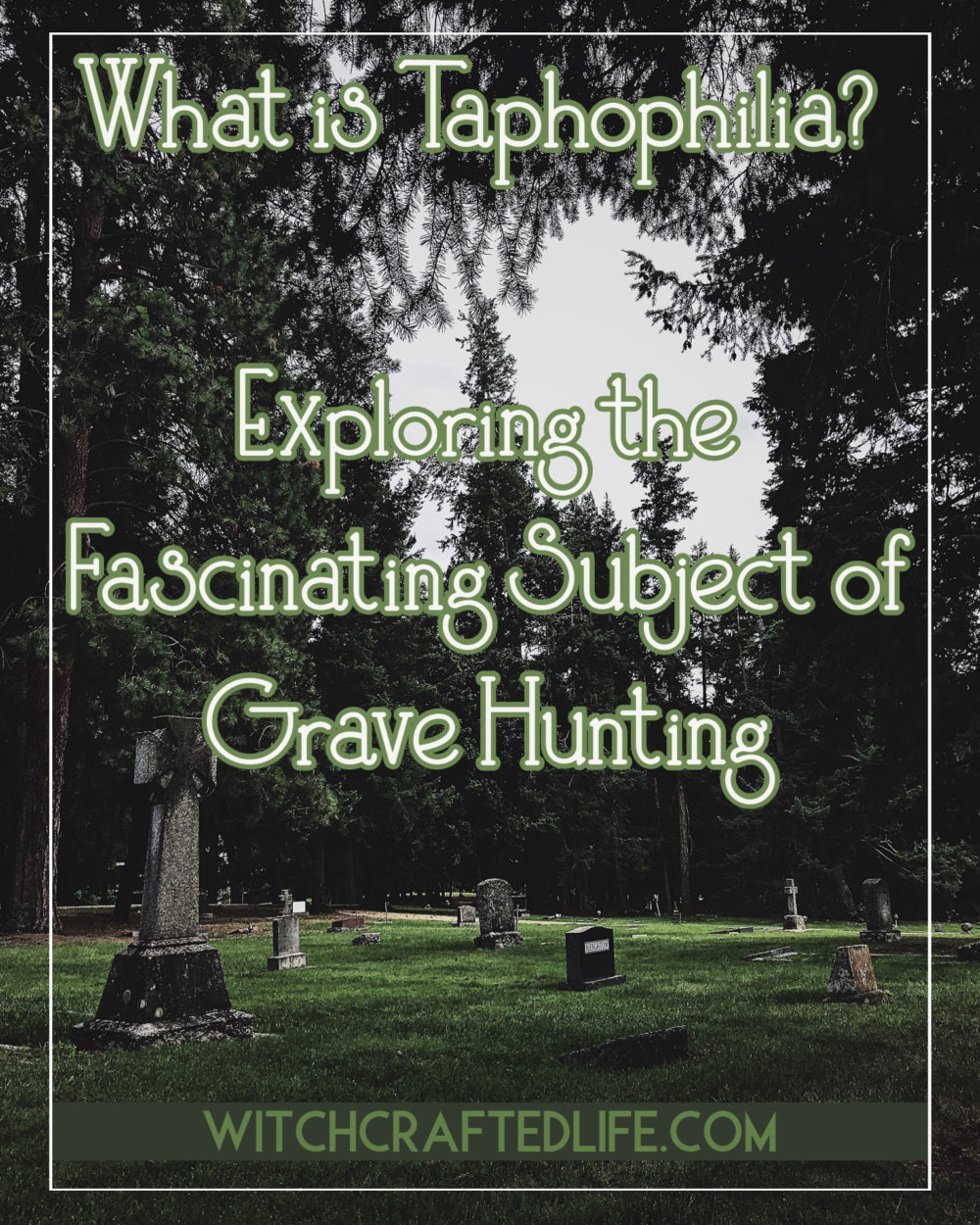
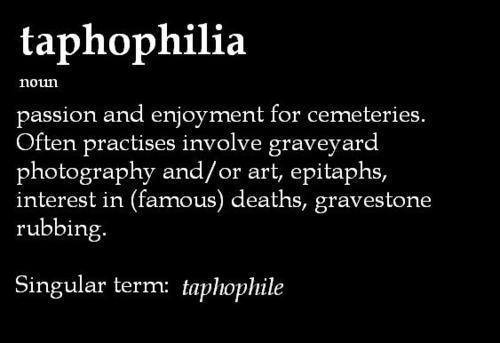
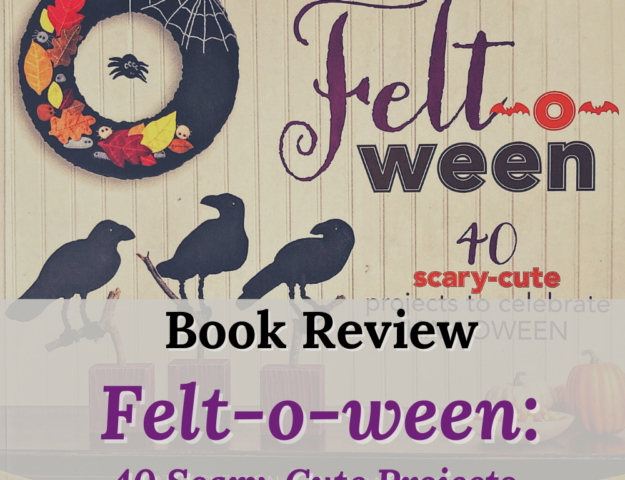
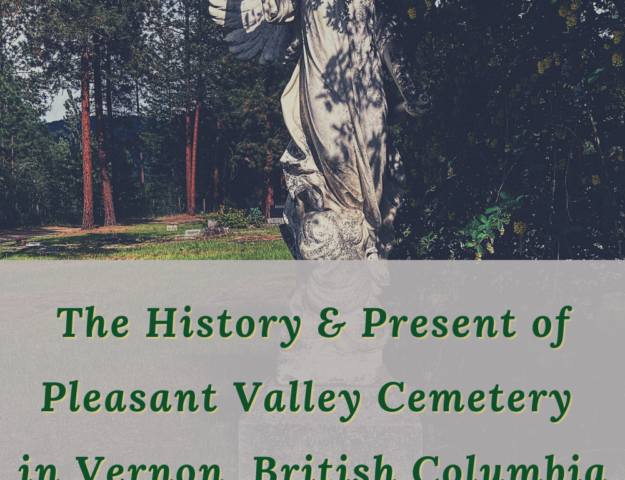
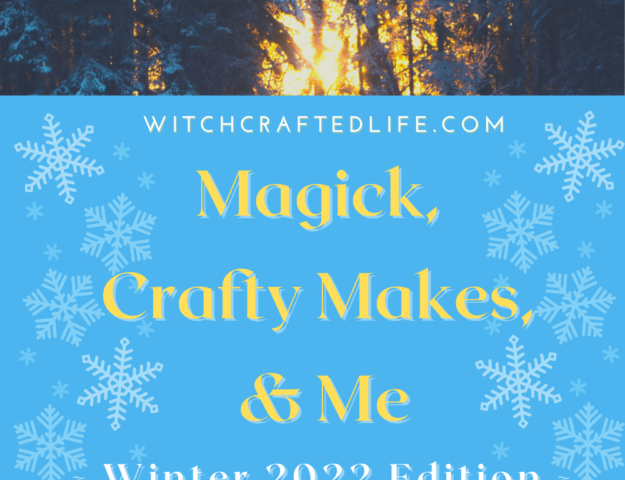
Okay, my dear, you and Tony are just going to have to come and visit Victoria so that we can explore Ross Bay Cemetary! https://oldcem.bc.ca/cem/cem_rb/ – it even has an angel! I walk past it every week on my Mental Health Walk, and often see deer in there, but it’s very quiet. I have relatives buried there somewhere and would love to spend some time exploring. The famous artist Emily Carr is buried there too.
My sweet friend, we are so often on the same wavelength! A number of years back I began putting together a list of graveyards that I’d love to visit one day (for which there’s at least a modicum of possibility that such might happen at some point – I’m nothing if not a realist 😄) and Ross Bay is on there!
It’s apt to be one of the cemeteries that I’ll have a decent chance of getting to actually, and I can scarcely wait for that day to hopefully happen. Thank you SO much for suggesting it, lest it was new to me. You’re always so thoughtful, dear Shelia!
May you have a fun-filled and truly lovely Halloween weekend,
♥ Autumn
I so appreciate the wealth of information and inspiration you have shared here, and it was lovely to read about your experiences and opinions.
I’ve always loved learning about the ways different cultures view death, their rituals and how they came to be. There’s always so much care and love involved.
Beautifully said, dear Marcie. Thank you immensely. I too am deeply fascinated by how the subject of death – something that every last one of us will encounter eventually – has been/is handled in various cultures and time periods.
I strongly feel, even in the face of the current pandemic, that many places in the modern world are alarmingly disconnected from death and that we’ve lost something as a collective whole by (most folks at least) no longer engaging with death as frequently or intimately entwined in our daily existence.
I really appreciate your comment, sweet soul, and hope that you have a wonderfully lovely Halloween/Samhain season.
♥ Autumn
Great post — important subject, informative content. For most of human history (until around a century ago), societies viewed death as more likely and more natural than we do. So cemeteries had a different meaning back then. As recently as a century ago the Green Wood cemetery was among the top two tourist attractions in New York City. People would go, wander around, picnic and hang out there.
As you know, I’ve visited and photographed several cemeteries on my blog. The most touching was a pet cemetery. The tombstones ache with deep grief felt by pet-owners for their beloved animal companions.
You’re awesome, Ally. Thank you very much.
It is deeply special, meaningful and lovely that you’ve had an opportunity to not only visit, but also photograph a number of cemeteries as well. I too suspect that my heart would be sobbing immensely if I visited a pet cemetery – especially with the loss, in the fire, of our beloved (cat) Stella still so fresh feeling for us. That said, I do believe I could visit a pet cemetery and would welcome the opportunity to do so, if it came my way.
May you have a marvellous Halloween weekend, my friend!
♥ Autumn
Whar a beautifully written and well researched post, Autumn. I’m not sure if I can be considered a Taphophile, but I do love visiting graveyards, especially of the old and atmospheric kind. I particularly love old churchyards, which you still see a lot of in the UK, and in some areas in Belgium. And the big graveyard in Antwerp, Schoonselhof, is also well worth a visit, even if for the graveyard monuments alone. I also have a collection of burial cards – I’m not sure if they exist in Canada. They are mostly from my own family, going back to the 1800s. Quite fascinating! xxx
Thank you tremendously, dear Ann. You are exceedingly kind and supportive – blessing my heart with your touching words.
The graveyards you described sound so beautiful and tranquil. I would truly love to visit them someday – indeed, on any future trips to Europe, I will be making cemeteries/graveyards a high priority on my/our itinerary.
A touchingly lovely item – often called a funeral card – existed here (and still does in a much more modern guise usually), which may be the same thing you’re discussing. If so, I collect them (along with various other funerals related vintage and antique items), keeping some out on display to reflect on and find inspiration in all throughout the year.
How meaningful that you have some from your own family. I cannot claim the same. Mine have been purchased over the years (this iteration of my collection being post-fire, that is). I’m always on the lookout for more and feel so honoured to give these poignant pieces of history a very loving new home.
Thank you again, my friend. May you have a splendidly enjoyable Halloween weekend!
♥ Autumn
Very informative and educational post, thanks for sharing Autumn!
It is my heartfelt pleasure, Donna. Thank you very much for your wonderfully kind feedback on post. It was one of the pieces for which, the moment the idea struck me, I couldn’t pen fast enough. 😊
I hope that your month is going great and that you have a fun-filled, fa-boo-lous Halloween weekend.
♥ Autumn
What an interesting topic, Autumn- as I had never heard the term taphophile until now. The only times that I have typically visited grave sites is during a funeral- which represents sadness and loss to me. As I leave the gravesite, I do find myself looking at other markers and reading who is buried there, how long they lived, and noting the years they walked this earth.
Several years ago, our town had an evening tour that highlighted visiting one of our local cemeteries. We went in groups and were directed to stop at certain graves, while someone dressed in the time frame as the person buried there “appeared” and spoke briefly to us-as though they were that person. That was quite an interesting tour.
Thank you for your fascinating post.
Thank you deeply for sharing both about your own highly personal (and thoroughly understandable) feelings regarding what cemeteries mean to you, as well as about that really interesting tour. I’ve not yet come across one like it here in Canada, though it’s entirely possible one or more exists.
So long as the portrayals are done respectively (as it sounds like they are at that location), I have zero qualms with this way of presenting history. It’s engaging, helps to keep the memory of the departed alive, and surely makes for a very memorable experience.
Thinking of you, my treasured fellow October adoring friend, and wishing you an awesomely enjoyable Halloween weekend.
♥ Autumn
Very interesting post Autumn… I’ve only visited graveyards a couple of times. The last time was about 10 yrs ago and it was a very old cemetery. My mom & uncle wanted to see where their long lost relatives were buried. What touched me the most was the lost of such young children and babies in the late 1800’s. Looking at all the different dates and the precious time they spent on earth was heartbreaking. Another thing that I found very interesting was the art and design that went into some of the old tombstones. They didn’t have all of the modern tools that we have today and they were still amazing and so beautiful!! I hope you enjoy your weekend.
Hugs, Tammy
Thank you very much, sweet Tammy. I sincerely appreciate you sharing about some of your personal connections to, and interactions with, cemeteries.
I was nodding in vigorous agreement as I read what you wrote. The graves of the children, as well as family members (of any age) that perished in rapid succession, are amongst those that always hit my heart the hardest as well.
I also tend to find I’m drawn to very basic/primitive headstones and gravemarkers for which little to no information (such as those that simply said “baby”, “mother”, “grandfather”, etc). I want to know more about those individuals who were buried beneath them, and moreover, hope that they know that even if their personal information was recorded (in that location), they are not forgotten.
So true as well about the stunning art and immense skill that went into many older headstones, cemetery statues, and the like. I’ve read a number of great books on this topic and would be happy to recommend some, if you’d ever like.
Wishing you a splendidly lovely Halloween weekend,
♥ Autumn
I love road trips. I live in Utah and there are so many little cemeteries scattered around in the desert areas in the southern end of the state. I’ve traveled the interstate up and down the state forever and I swear I always find a tiny little graveyard right beside the freeway during that golden hour right before the sun goes down. I can have passed that place dozens of times and never seen it, but in that golden glow it’s so totally visible. And then I find the next exit and backtrack in frontage roads. Always a treat. I’ve lived cemeteries for as long as I can remember. You can feel the history.
Beautifully said, Pam. I completely agree that cemeteries allow us to feel the history that they surge with. What an excellent way to view spending time there.
I really enjoyed hearing about some of the cemeteries that you’ve visited in Utah. Being such a storied and fascinating state, I can just imagine the vibrant and intriguing history that runs deep through many of these burial grounds. Should I ever have the good fortune to visit that beautiful corner of the US, I’ll certainly aim to visit at least one or two cemeteries there myself as well.
Thank you very much for your lovely comment. May you have a terrific tail end of October.
♥ Autumn
Very interesting post! Thanks for sharing all of the information and relations to the Season. My mom does grave searches often because of her research and finds some very interesting things about our heritage.
You’re all kinds of sweet, dear Vicki. Thank you so much!
It’s awesome that your mom has a passion for genealogy (it’s a substantial interest of mine as well) and that through it, she’s been able to learn more about your family’s history.
I’ve not (yet?) had the chance to visit many of my own relatives’ final resting places. In part because those who have pasted in more recent decades often opted for cremation (sans any form of cemetery memorialization). Another reason is that, if we go a touch further back, the majority of my ancestors lived and, in turn, were laid to rest in other countries.
Still, that said, I really hope to be able to find and visit more cemeteries where I have family interred as time goes on.
Many thanks again, my dear friend. May you and your family have a safe, fun, and very happy Halloween weekend!
♥ Autumn